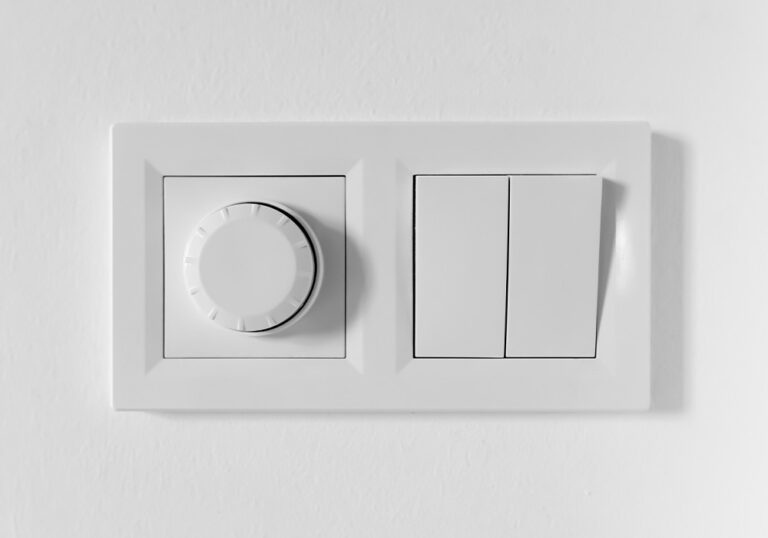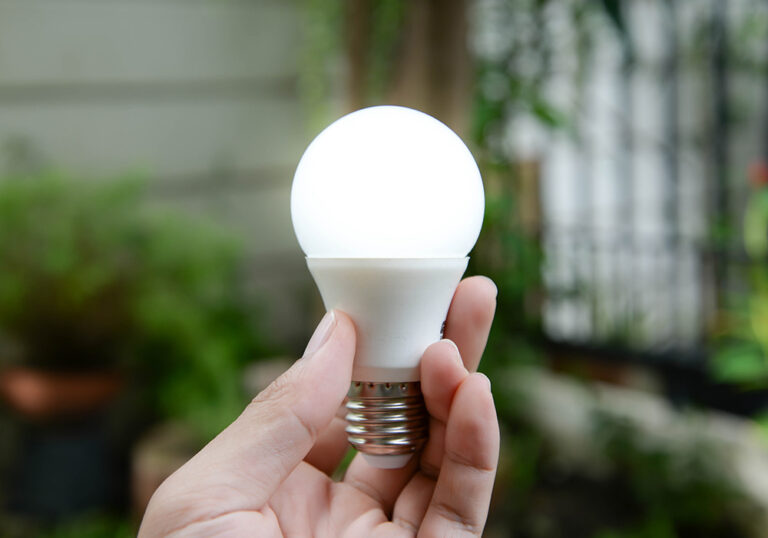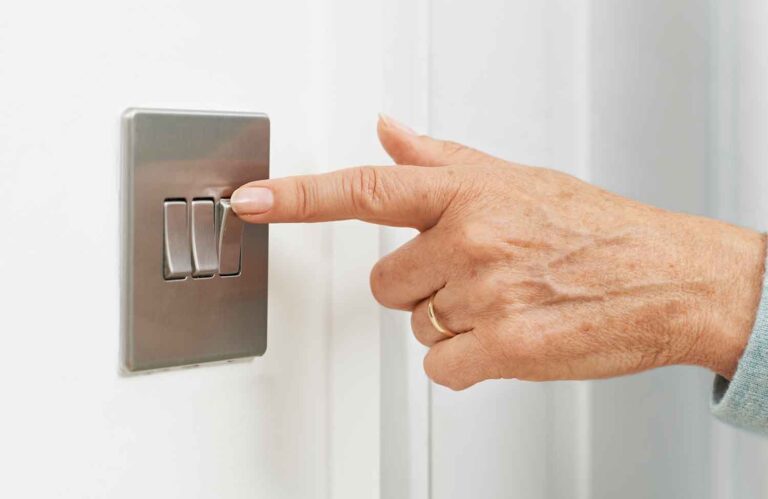Do Dimmer Switches Get Hot?
Dimmer switches have become increasingly popular in modern homes, offering the ability to adjust lighting levels and create a comfortable ambience. However, some users may notice that these switches can become warm or even hot to the touch, raising concerns about their safety and potential hazards. Understanding why dimmer switches get hot and recognising when this might become a problem are key to ensuring that they are utilised safely and effectively.
At the heart of this issue is the way dimmer switches manage the flow of electricity to your lighting. The technology used in the dimmer, as well as its age, can influence the degree of heat generated. It is important to note that it is normal for a dimmer switch to feel warm during operation, but learning to identify when this heat becomes excessive is essential for preventing potential issues.
Key Takeaways
- Dimmer switches are designed to control lighting levels but can get warm or hot depending on the technology used and age of the switch.
- A warm dimmer switch is normal, but recognising excessive heat is important for preventing safety hazards.
- Factors such as wattage rating, power surges, and load capacity can influence the heat generated by a dimmer switch.
Understanding Dimmer Switches
Dimmer switches are a popular choice for controlling the brightness of lights in your home. They allow you to adjust the intensity of the light according to your preference. While these switches are convenient and versatile, they can sometimes get warm or even hot to the touch. This is because they contain electronic components that generate heat during operation.
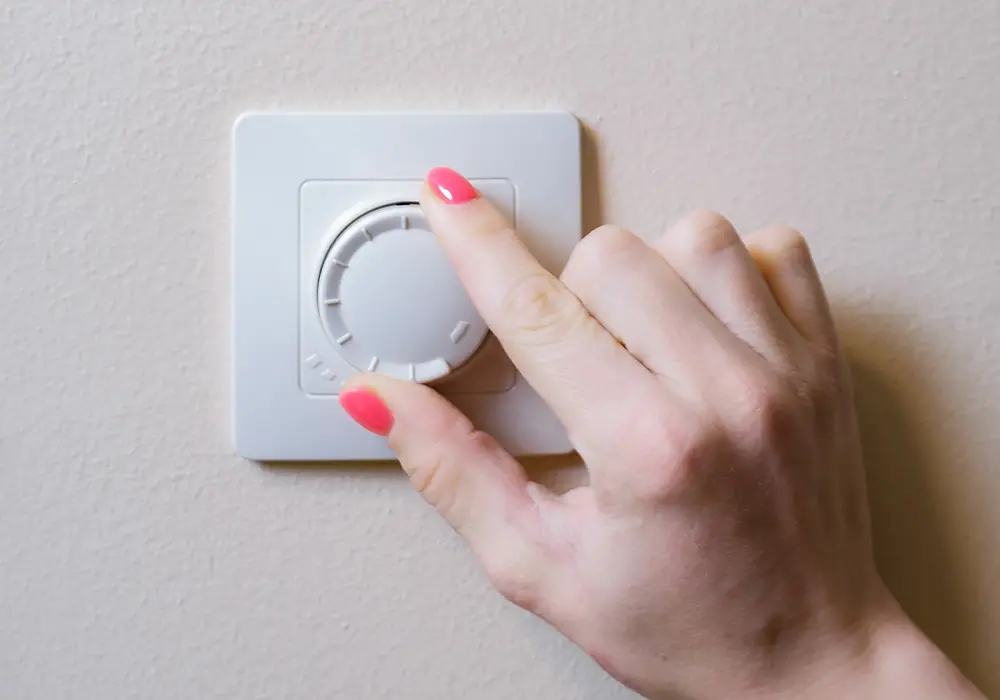
It is normal for a dimmer switch to get slightly warm during use, as it needs to dissipate the excess energy it is controlling. The interior temperature of a typical dimmer switch can be around 140°F, while some allow for a maximum temperature of 195°F. Keep in mind that this is the interior temperature of the device, not the switch you touch.
However, if the switch becomes uncomfortably hot or even dangerous to touch, it may indicate a problem. One potential cause is overloading the switch by connecting too many lights or exceeding its wattage rating. This can lead to heat build-up and various issues such as bursting bulbs, burnout of the dimmer switch, and frequent bulb replacements.
Another potential issue could be power surges impacting heavily loaded dimmers. It’s essential to ensure that the connected lights’ total wattage does not exceed the dimmer switch’s capacity. If you are unsure about the wattage rating of your switch or the lights connected to it, consult your switch’s manual or seek professional advice.
If you suspect there is a problem with your dimmer switch, it’s best to turn off the electricity to that lighting circuit and call an electrician to inspect and resolve any issues. Don’t attempt to fix it yourself as it may involve working with electrical wiring, which is dangerous for inexperienced individuals.
Remember that a slightly warm dimmer switch is often part of its normal operation, but it should never be too hot to touch. Always follow the manufacturer’s guidelines for usage and seek professional help if you encounter any problems.
How Dimmer Switches Work
The Role of the Triac
A dimmer switch works by using a component called a Triac, which is a semiconductor device capable of controlling the flow of electrical current. The Triac plays a crucial role in adjusting the intensity of the light by switching the current on and off at a rapid rate. This rapid switching allows you to control the amount of light emitted by the bulb and hence, adjust the brightness according to your preference.
Electrical Resistance and Heat
As current flows through the Triac and other electronic components in the dimmer switch, it creates electrical resistance, which in turn generates heat. It’s normal for dimmer switches to feel slightly warm as a result of this heat generation. Most dimmer switches operate at around 140 degrees Fahrenheit, with an upper limit of around 195 degrees Fahrenheit.
However, if a dimmer switch becomes excessively hot, this may indicate an issue with the switch itself, or with the wattage being controlled by the switch. It is essential to make sure that the wattage of the bulbs connected to a dimmer switch does not surpass its rated capacity, as this can lead to overheating and potential damage to the switch or the bulbs.
In conclusion, it’s essential to ensure that the wattage being controlled by your dimmer switch does not exceed its rated capacity to prevent overheating-related issues. If your dimmer switch feels too hot to touch or is producing any unusual sounds, it’s best to turn off the electricity to the lighting circuit and consult a professional electrician.
Factors Influencing Heat in Dimmer Switches
Wattage Rating
The wattage rating of a dimmer switch plays a significant role in the heat it generates. If a dimmer switch is handling a lighting load that exceeds its wattage rating, it can lead to heat build-up and create potential issues such as bursting bulbs, burnout of the switch, and frequent bulb replacements. To ensure the safe and efficient operation of your dimmer switch, make sure it is compatible with the wattage of the lights you’re using.
Quality and Design
The quality and design of a dimmer switch can also impact its heat build-up. High-quality dimmer switches typically have better heat dissipation systems incorporated into their design, allowing them to stay relatively cool even when working at near-capacity. On the other hand, poorly designed or low-quality dimmer switches may not regulate heat effectively, causing them to become excessively hot. To ensure long-term functionality and safety, opt for dimmer switches from reputable manufacturers and follow their recommended installation instructions.
Installation Factors
Proper installation of a dimmer switch is important for heat management. Some factors to consider when installing a dimmer switch include:
- Ventilation: Ensure there is adequate airflow around the dimmer switch. This helps to dissipate any heat generated during operation.
- Load Compatibility: Check the dimmer switch’s compatibility with the lighting load. The switch should be designed for the specific type of light bulbs you use, such as LED, incandescent, or another type.
- Space: Don’t overcrowd a single dimmer switch with multiple high-wattage lights. Give each dimmer switch room to manage its individual power load.
By addressing these factors during installation, you can prevent heat build-up and ensure a safe and efficient operation of your dimmer switch. Remember, it is normal for a dimmer switch to be warm to the touch during use, but it should never be uncomfortably hot. If your dimmer switch does become too hot, consult a professional electrician for further assistance.
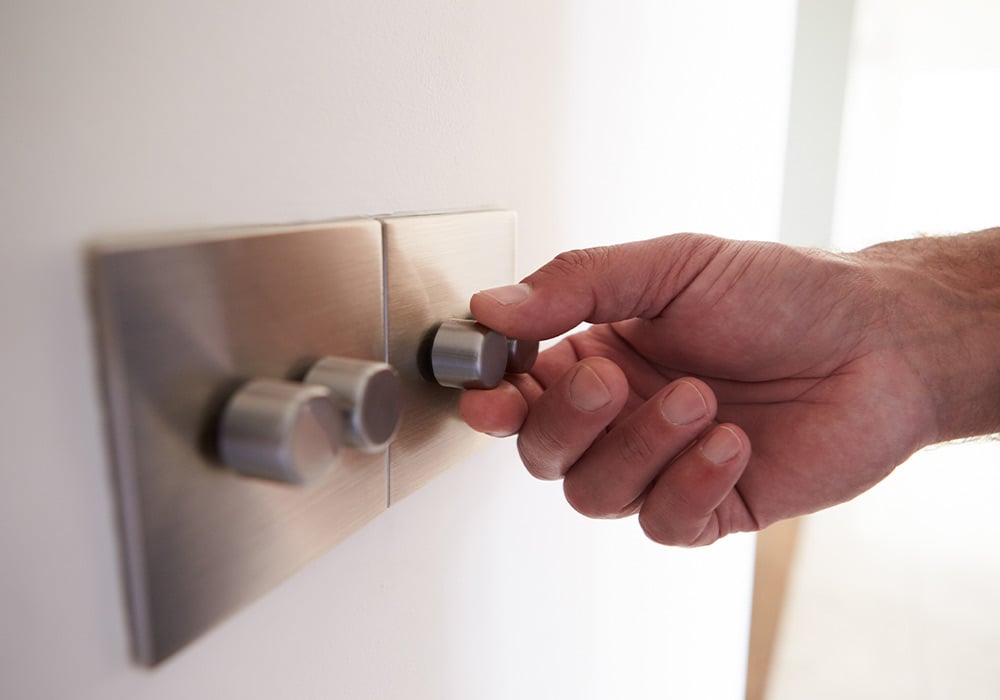
Recognising Dangerous Levels of Heat
It is not uncommon for dimmer switches to generate heat during use due to the electronic components within them. However, it is essential to recognise when the heat produced becomes dangerous and poses a potential hazard.
A dimmer switch may become too hot if it is overloaded, and internal temperatures can reach up to 90°C, causing potential risk. In these instances, the excessive heat can cause the plastic mounting on your wall to melt, compromising the integrity of your circuit and possibly posing a fire risk. If you notice any signs of burning or singed plastic, it is crucial to address the problem immediately.
The safety organisation Underwriters Laboratories (UL) states that dimmer switches are considered safe when operating at or below 195 degrees Fahrenheit (90 degrees Ceclsius). The average dimmer typically operates at around 140 degrees Fahrenheit (60 degrees Celsius). If you suspect your dimmer switch exceeds this recommended threshold, it is time to contact a qualified electrician.
To check for dangerous levels of heat, follow these steps:
- Turn off the electricity to the switch at the fuse box.
- Remove the switch’s cover and inspect around the switch box for any apparent insulation.
- If you find excessive insulation, use a plastic caulk knife to scrape it away from the box gently.
By doing this, you can help prevent heat from becoming trapped within the switch and causing potential issues. Always remember that safety is paramount, and if you have any concerns regarding the heat produced by your dimmer switch, seeking professional advice from an electrician is highly recommended.
Preventive Measures
Use of LED Bulbs
To minimise the risk of overheating, it’s essential to select energy-efficient light sources. One practical solution is to replace traditional incandescent bulbs with LED bulbs. LEDs are known for their energy efficiency, which will significantly reduce the load on your dimmer switch. This can help maintain a safe temperature, even during prolonged usage.
Quality of Product Selection
When choosing a dimmer switch, pay close attention to its wattage rating. Ensure that the combined wattage of all the light bulbs it will control is lower than the specified rating. Selecting a high-quality dimmer switch from a reputable manufacturer is also crucial, as it can help ensure adequate heat dissipation and performance.
Safe Installation Practices
Lastly, it’s always prudent to engage the services of a qualified professional electrician to install your dimmer switch. Working with the electrical components of your home can be dangerous without proper knowledge and experience. A professional will be able to install the switch correctly, verify your wiring setup, and ensure that any potential safety hazards are addressed.

